Offer Personalization: How to Deliver Relevant Promotions That Drive Conversions
Published on October 31, 2025/Last edited on October 31, 2025/11 min read
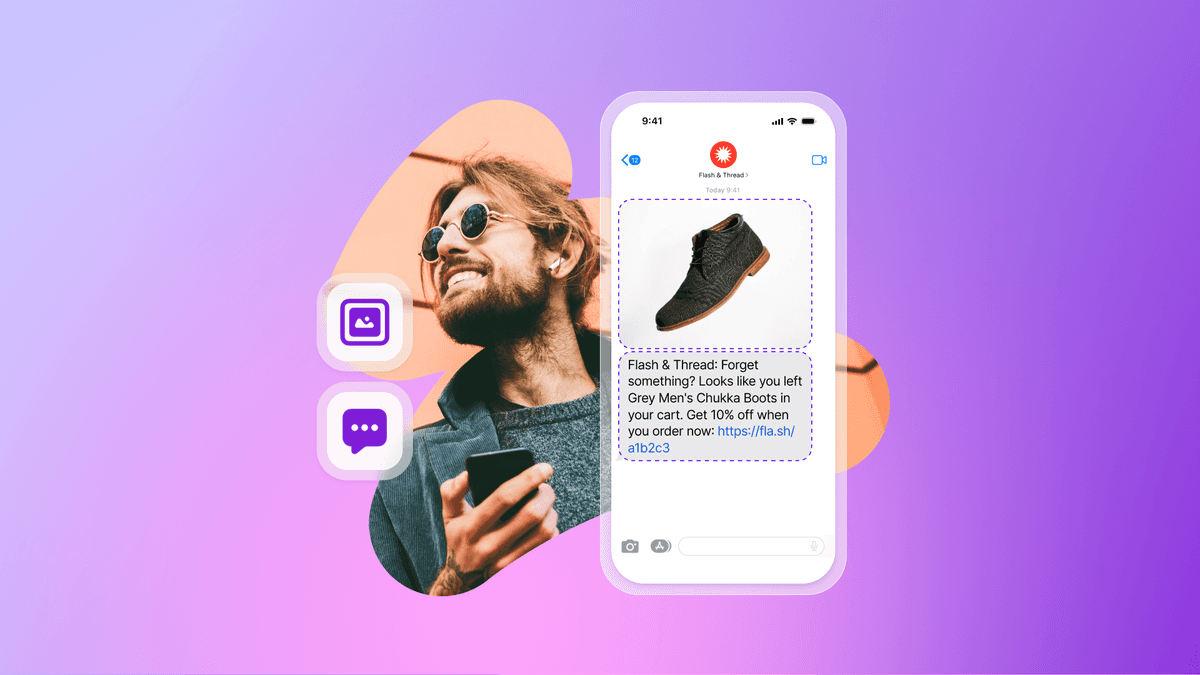
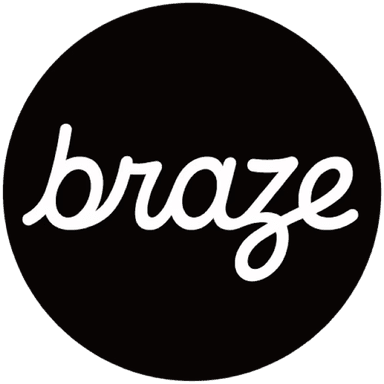
Team Braze
Seventy-one percent of consumers these days expect companies to provide personalized interactions, while 76% get frustrated when this doesn’t happen. Offer personalization helps brands deliver promotions, personalized product recommendations, and rewards that meet that expectation and feel relevant to each customer’s behavior, preferences, and context. Instead of generic coupons or one-size-fits-all campaigns, businesses can use data to make every interaction more meaningful.
Research shows that personalized offers can generate 5-15% revenue lift—and in some sectors, as much as 25%. Across industries, personalization performance has the potential to unlock more than $1 trillion in value.
With that in mind, let’s take a look at what offer personalization is, why it matters, how it works in practice, and the challenges brands face when scaling it. We’ll also share examples and case studies that demonstrate how leading companies are turning personalized offers into measurable growth.
Contents
What is offer personalization?
Why personalized offers marketing matters
Types of offer personalization
How AI offer personalization works
Promotion personalization best practices
Challenges in offer personalization
AI offer personalization at scale
Final thoughts on offer personalization
FAQs about offer personalization
What is offer personalization?
Offer personalization refers specifically to customizing promotions, discounts, product recommendations, and rewards so they resonate with individual customers. It’s a subset of personalization that focuses on incentives during moments when a brand is asking a customer to act, purchase, or re-engage.
This makes it distinct from broader marketing personalization, which may tailor content, creative, or messaging. Offer personalization is about aligning value exchanges to the individual. For example:
- A retail brand sending a personalized product recommendation with a targeted discount.
- A fast food app highlighting a favorite order with bonus loyalty points.
- A subscription service offering a “win back” discount based on churn-risk signals.
- A financial services provider creating a travel offer for a new credit card tied to a customer’s travel behavior.
Why personalized offers matter in marketing
Offer personalization matters because it directly drives conversion, loyalty, and long-term customer lifetime value. With AI-driven promotions, brands can scale up this benefit, and analyze customer data in real time to choose the right incentive. And with reinforcement learning personalization, systems continuously improve by testing and adapting to what works best for each individual.
Reinforcement learning personalization is a branch of AI that learns through continuous testing and feedback, adapting each offer in real time based on the business metrics that are important to you, and first-party data that informs unique customer profiles. It is fully integrated into the Braze platform, or available as a standalone decisioning layer for any martech stack, where autonomous AI agents can personalize every aspect of customer communication, experiment, and continuously learn across customer touchpoints.
Key benefits include:
Higher conversion rates
Customers are more likely to act when the incentive feels tailored to them. For example, an airline presenting a miles bonus aligned to a traveler’s preferred routes has a stronger impact than a generic flight discount.
Improved retention
Personalized offers give customers ongoing reasons to re-engage. A subscription box service might use browsing and purchase data to provide contextual upsell offers, encouraging customers to stay longer and spend more.
Stronger loyalty
Rewarding customers in ways that reflect their history or preferences creates a sense of reciprocity. Loyalty personalization—such as sending a surprise “thank you” offer on a half-birthday—helps strengthen emotional ties to the brand.
Reduced churn risk
Predictive personalization can flag customers at risk of leaving and serve them tailored incentives to bring them back. A streaming service, for example, could provide a free trial extension or discounted add-on for viewers showing disengagement signals.
Sustainable growth
By moving beyond blanket discounts to more sophisticated tactics, brands protect margins while building deeper customer relationships. AI-driven promotions help identify the lowest-cost, highest-value offers to deliver at scale.
In an environment where consumers can switch brands with a swipe, relevance is currency.
Types of offer personalization with examples
Personalized offers marketing can take many forms depending on a brand’s industry, customer data, and goals. Here are the types most often used and examples of how they might be conveyed to customers:
Dynamic offers and discounts
Adjusting discounts in real time based on customer signals:
- Retail: Triggering a limited-time discount when a customer abandons a cart.
- Travel: Offering a price drop alert for a previously searched route.
- Subscription apps: Providing a discount for upgrading to an annual plan when monthly churn risk is detected.
Personalized product recommendations
Suggesting items or services that match purchase history or predicted preferences:
- eCommerce: Surfacing complementary products (“complete the look” bundles).
- Media/streaming: Recommending shows similar to past viewing patterns.
- Financial services: Proposing relevant card perks (e.g., travel insurance for frequent flyers).
Loyalty and reward personalization
Tailoring rewards, bonus points, or challenges to customer behavior:
- Quick service restaurants (QSRs): Offering double points on a customer’s most-ordered menu item.
- Retail: Surprise “thank you” rewards for reaching loyalty milestones.
- Gaming: Personalized achievements and in-app bonuses tied to play history.
Contextual offers
Using real-time data such as geo, time, or weather to trigger relevance:
- Hospitality: Sending a push notification for a dinner discount when a guest is near the hotel restaurant at 6 p.m.
- Coffee chains: Promoting iced drinks on hot days or hot drinks during a cold snap.
- Ride-hailing: Discounted rides offered during severe weather alerts.
Cross-channel offers and personalized promotions
Coordinating offers across email, SMS, in-app, and push to reinforce impact:
- Retail: Emailing a discount code, then following up with an app notification if unopened.
- Subscription services: Delivering a loyalty offer in-app, then reinforcing it via SMS.
- Financial services: Sharing a card-use bonus across email and app alerts for consistent visibility.
With the right technology stack, these strategies can be combined into 1:1 personalized promotions that boost conversions and strengthen loyalty and customer lifetime value.
How AI offer personalization works
Delivering relevant promotions at scale requires three building blocks—connected inputs, adaptive AI, and an orchestration layer that brings everything together in real time.
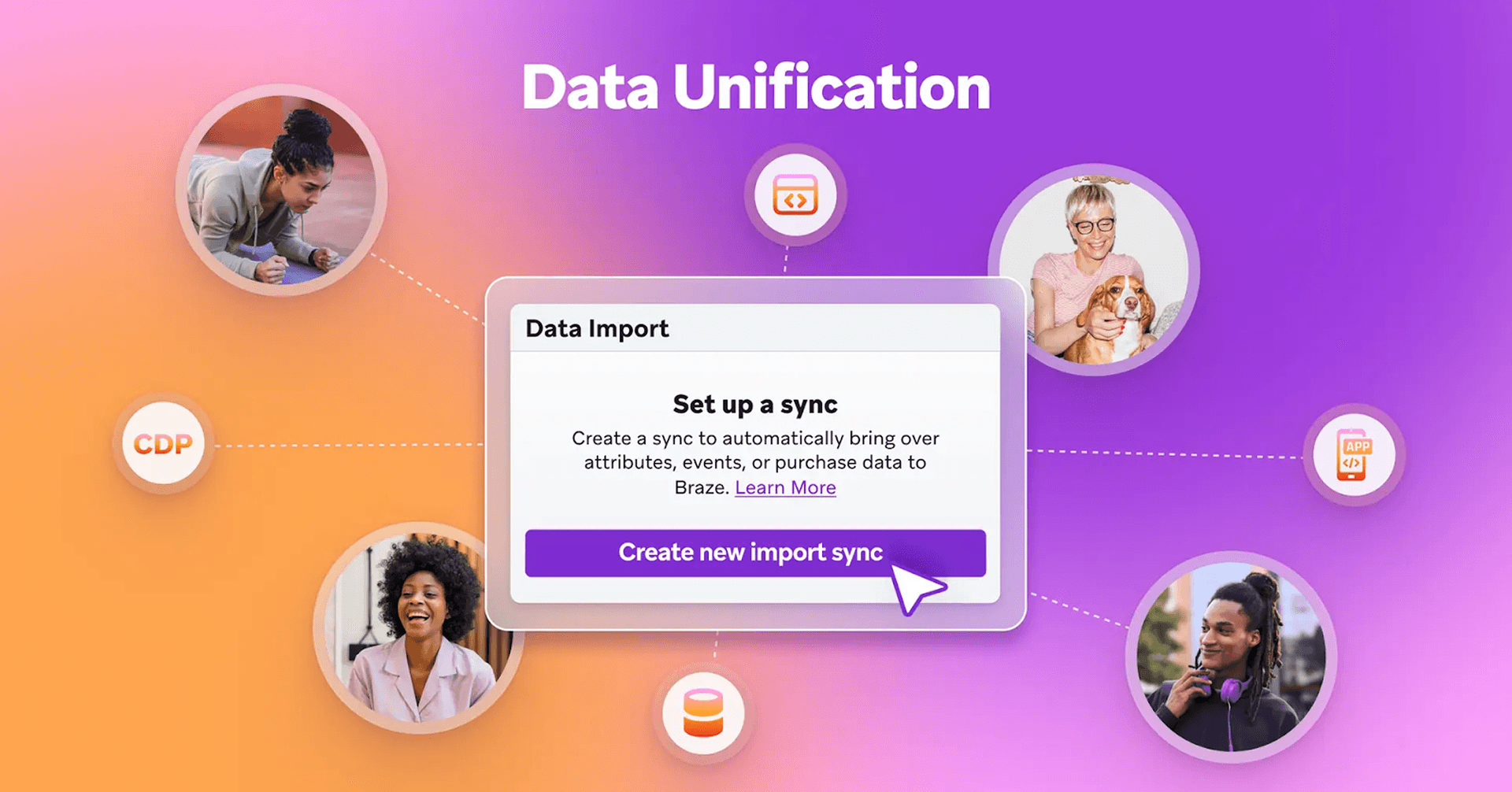
Building a single customer view with unified data input
Effective personalization starts with comprehensive data. By unifying customer signals into one profile, brands gain the foundation for accurate targeting. Key inputs include:
- Behavioral data: browsing activity, app usage, and engagement with past campaigns
- Transactional history: purchases, frequency, cart size, and subscription renewals
- Preferences: declared interests, loyalty program activity, and saved favorites
- Contextual signals: location, device, time of day, weather, or seasonality
With these inputs, marketers can move beyond static segments toward individualized engagement that reflects the customer’s real context.

Adapting with AI offer personalization
This is where machine learning reshapes the process. Instead of relying on fixed rules, AI decisioning tests different incentives and adapts continuously based on outcomes.
For example, one customer may respond best to a 10% discount while another values bonus loyalty points. Over time, reinforcement learning identifies which incentive is most effective and cost-efficient for each individual, reducing reliance on blanket discounts while driving stronger conversions.

Turning decisions into experiences with journey orchestration
AI decisioning only works if it’s delivered seamlessly. Orchestration platforms make it possible to coordinate cross-channel offers across email, push, SMS, in-app, and web, ensuring customers receive consistent, on-brand experiences. These platforms also support ongoing testing, allowing marketers to refine strategies and scale what works.
Promotion personalization best practices
Promotion personalization is most effective when it balances customer value with business impact. These practices help brands execute responsibly and at scale:
- Prioritize relevance over reach: Focus on customers most likely to engage instead of flooding broad audiences with generic discounts.
- Balance incentives: Combine monetary rewards with experiential ones—like early access, loyalty points, or exclusive content—to create value without margin erosion.
- Respect privacy: Apply customer data transparently and responsibly, making it clear how information is used to improve the experience.
- Test and learn: Use controlled experiments to refine offer types, timing, and channels before rolling out widely.
- Maintain consistency: Deliver coordinated, cross-channel offers so customers encounter the same level of personalization wherever they engage.
Challenges in offer personalization
Offer personalization can unlock meaningful growth, but scaling this personalization introduces real challenges. Marketers must balance relevance with responsibility to build trust, protect margins, and deliver consistently across channels.
Privacy and consent
Customers expect transparency around how their data is used. Collecting behavioral and transactional signals without clear opt-ins risks credibility. Trust grows when brands give customers control over preferences and explain how data improves the experience.
Discount dependency
Over-reliance on price-based offers erodes margins and trains customers to hold out for deals. More sustainable approaches include loyalty points, exclusive experiences, or early access—personalized incentives that preserve profitability while still driving action.
The “creepiness” factor
Personalization should feel helpful, not intrusive. Overly specific targeting (such as referencing highly personal behaviors) can create discomfort. The focus should always be on adding value in ways that feel natural to the customer.
Operational complexity
Managing dozens of personalized campaigns across channels is difficult without the right systems. Manual processes can’t adapt in real time or measure impact effectively. Dynamic content, real-time triggers, and robust testing frameworks are critical to keeping personalization scalable.
Scaling relevance across channels
Customers expect a seamless experience, whether through email, SMS, push, or in-app. Without unified data and orchestration, offers can become fragmented or contradictory. Connected systems that support consistent 1:1 personalization are essential for enterprise execution.
AI offer personalization at scale: Real-life case studies
Earlier, we outlined the three building blocks behind effective offer personalization—connected inputs, adaptive AI, and orchestration across every channel. Together, they make it possible to deliver relevant offers that evolve with each interaction. The following case studies show how brands are applying these principles in practice—by using real-time AI, cross-channel campaigns, and unified data to drive measurable growth.
8fit flexes its data muscles with AI-driven offers
8fit is a global health and wellness app offering workouts, nutrition plans, and meditations to millions of users. To grow paid subscriptions, they needed a smarter way to identify and engage likely buyers without resorting to heavy, margin-eroding discounts.
The challenge
8fit wanted to expand paid subscriptions but lacked clarity on which customers to target—and risked relying on costly blanket offers.

The strategy
By applying predictive insights, 8fit segmented users based on their likelihood to purchase. They then tailored subscription offers and tested different discount levels by probability tier, preserving deeper discounts for harder-to-convert audiences.
The wins
The campaign achieved 3.75X higher conversions compared to generic promotions, while reducing wasted messaging. This predictive approach improved ROI and allowed 8fit to engage the right customers with the right incentive.
foodora serves up cross-channel consistency
Operating in 700+ cities across Europe, foodora is a leading on-demand food delivery brand. With multiple platforms and siloed communications, they struggled to engage customers consistently and needed to build trust through more relevant, timely interactions.
The challenge
foodora’s fragmented messaging led to inconsistent engagement and missed opportunities. Customers received offers at irrelevant times, driving higher churn and unsubscribe rates.
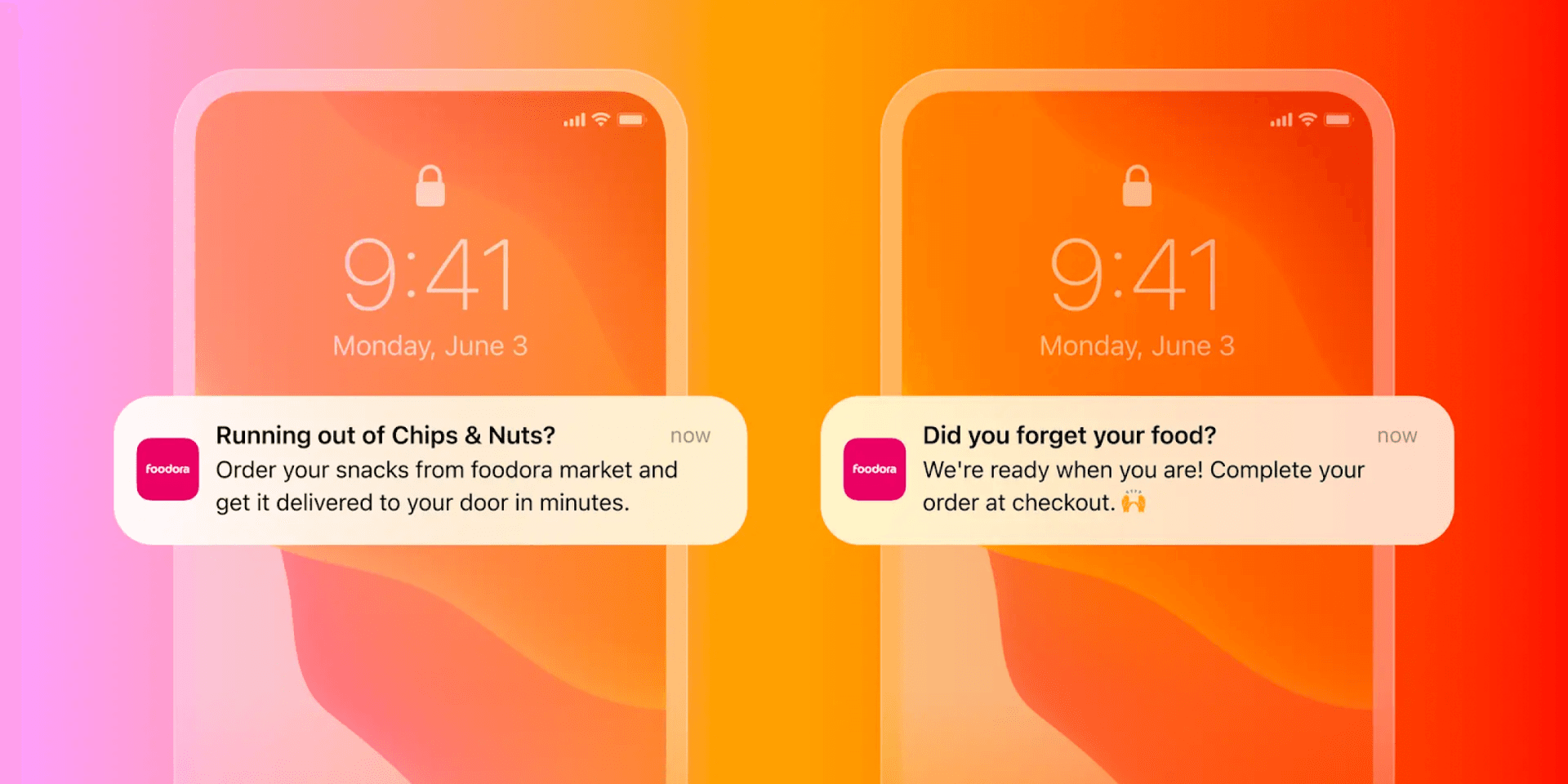
The strategy
The company unified customer communication across email, push, and in-app channels. By applying AI-powered send-time optimization, foodora ensured that messages reached each customer at the moment they were most likely to engage.
The wins
This approach boosted engagement across the board: a 41% conversion rate from campaigns, a 26% reduction in unsubscribes, and a 6% increase in push direct opens. The result was stronger loyalty and more repeat orders.
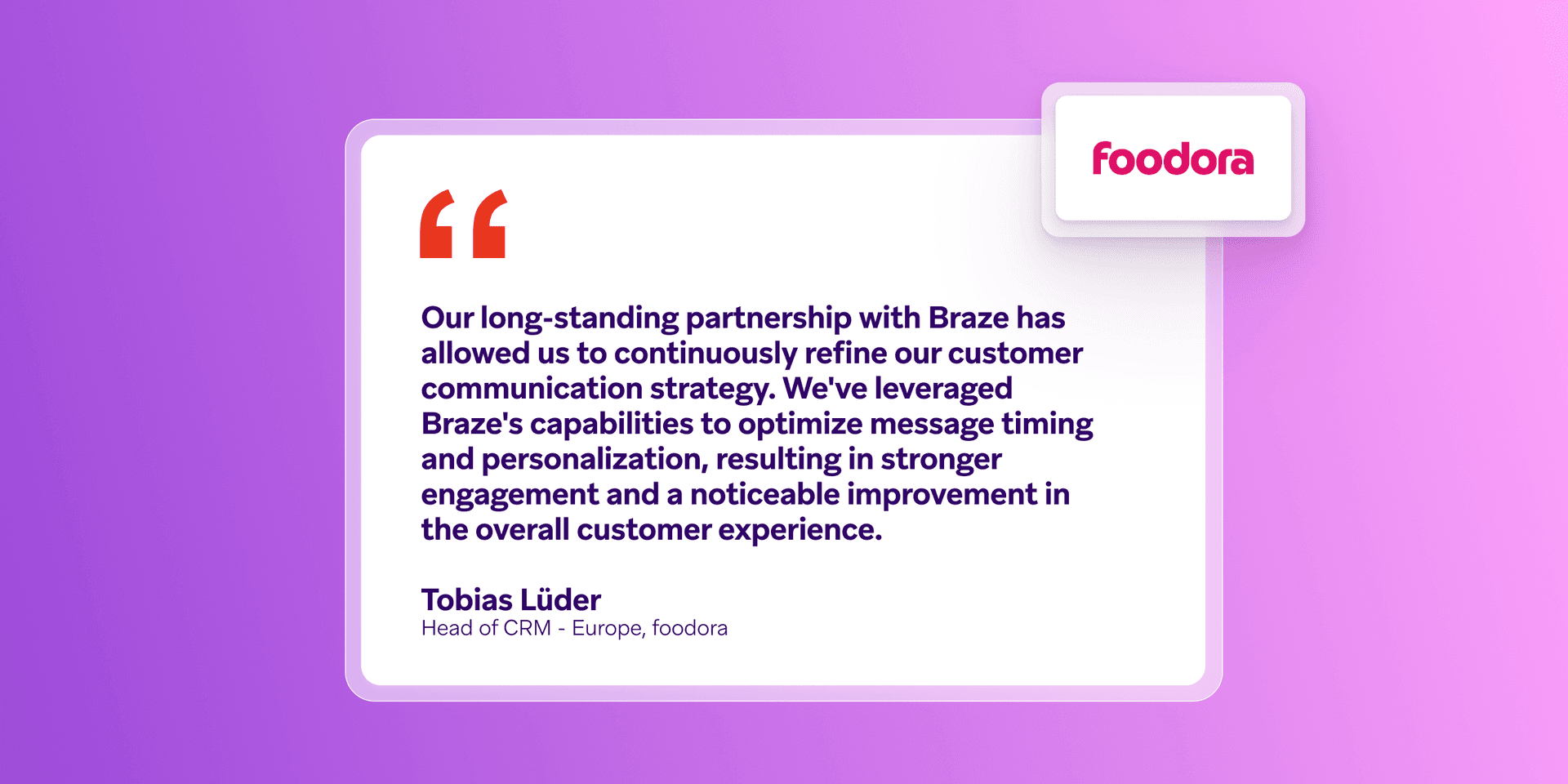
Grubhub eats up ROI with orchestrated journeys
As part of its mission to deliver tailored dining experiences, Grubhub needed to increase adoption of its Campus program. Many students started but failed to complete onboarding, limiting program value and long-term loyalty potential.
The challenge
Students often began the onboarding process but failed to complete it, leaving potential value untapped.
The strategy
The team rebuilt its onboarding flow with a multi-stage journey powered by personalized emails and push notifications. Each stage—welcome, card verification, and premium activation—delivered dynamic content tailored to student behavior and context.
The wins
Tens of thousands of students completed onboarding, triggering hundreds of thousands of new orders. The campaign achieved a 20% increase in orders, a 188% rise in premium sign-ups, and an 836% increase in ROI.
Final thoughts on offer personalization
By tailoring promotions and rewards to the individual, brands can increase conversions, reduce churn, and create stronger, more lasting customer relationships.
The greatest impact comes when personalization is powered by AI and reinforced with cross-channel orchestration. With the ability to adapt in real time and guide customers through dynamic journeys, every offer becomes a chance to strengthen trust and fuel sustainable growth.
As customer expectations continue to rise, the brands that embrace AI offer personalization now will be the ones shaping loyalty, trust, and long-term growth.
FAQs about offer personalization
Offer personalization is the practice of tailoring promotions, discounts, rewards, and product recommendations to each customer based on their behavior, preferences, and context.
Offer personalization is important because it increases conversions, retention, and loyalty while helping brands reduce churn and maximize customer lifetime value.
Types of offer personalization include dynamic discounts, personalized product recommendations, loyalty rewards, contextual offers based on signals like weather or location, and cross-channel promotions.
Examples include abandoned cart discounts, bonus loyalty points for lapsed members, weather-based promotions, or product bundles tailored to purchase history.
AI enables offer personalization by analyzing customer data in real time, predicting preferences, and using reinforcement learning to select the most effective offer for each individual.
Personalized offers improve retention and CLV by making interactions feel relevant and rewarding, encouraging repeat purchases, and strengthening long-term loyalty.
Challenges of offer personalization include managing privacy and consent, avoiding over-reliance on discounts, preventing “creepy” targeting, and coordinating campaigns at scale.
Braze supports offer personalization with AI-driven decisioning, cross-channel orchestration, and dynamic journeys that adapt in real time to deliver measurable results.
Yes. Retail, financial services, QSR, travel, media, and wellness brands all use offer personalization to deliver timely, relevant promotions that drive growth.
Marketing personalization tailors content and messaging, while offer personalization focuses specifically on the incentives—discounts, rewards, recommendations—that drive action.
Be Absolutely Engaging.™
Sign up for regular updates from Braze.
Related Content
View the Blog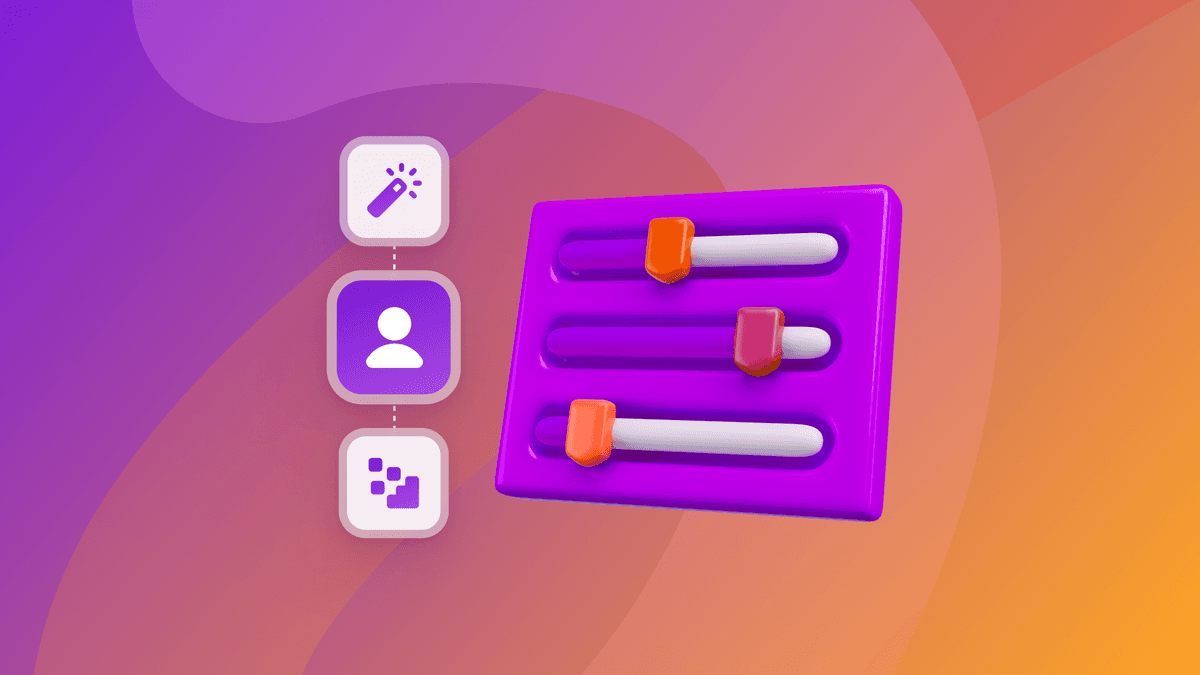
How behavioral marketing turns data into personalized experiences

Team Braze

What are contextual bandits? The AI behind smarter, real-time personalization

Team Braze

What is a multi-armed bandit? Smarter experimentation for real-time marketing
